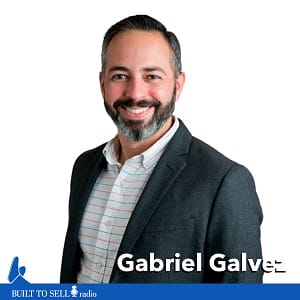About this episode
It can be tempting to expand your niche to grow your business, but the broader the market you serve, the less valuable you may be to an acquirer.
Gabriel Galvez founded Merger Labs to generate more leads for his investment banking clients by offering them digital marketing services. What started as a side project grew more quickly than anticipated, and within 18 months, Merger Labs was experiencing growing pains executing their marketing campaigns.
The company needed operations help, but instead of building the expertise in house, Galvez approached Wonderist Agency, a digital marketing agency focused on supporting dentists, about adding a new vertical market to their offering.
Wonderist liked Merger Labs’ niche focus and earlier this year, announced the acquisition of Merger Labs. In this episode, you’ll learn:
- How to use seasonality to structure an earn out
- Why having a defensible niche market is essential to drive a premium valuation
- The importance of productizing your service model
- The dangers of waiting for the “perfect” deal
Merger Labs had the discipline to focus on serving one industry vertical, and it made them irresistible to an acquirer. Find a niche that acquirers will salivate over by completing Module 6 of The Value Builder System™. Get started for free right now by completing Module 1.
Check out our article on The Biggest Mistake You Can Make When Turning A Service Into A Product.

About Our Guest
Gabriel Galvez built and sold his first company at 23, and it sparked his excitement in the deal-making business. Since then, he’s worked for a family office, an investment bank, and as the CFO of a number of companies. Over the last decade, he’s started four companies, one of which has been sold. After the sale of Merger Labs, Galvez now spends most of his time dedicated to serving as the CEO of CapTarget, an origination and back office service provider for PE firms and M&A firms. He lives in San Diego.


